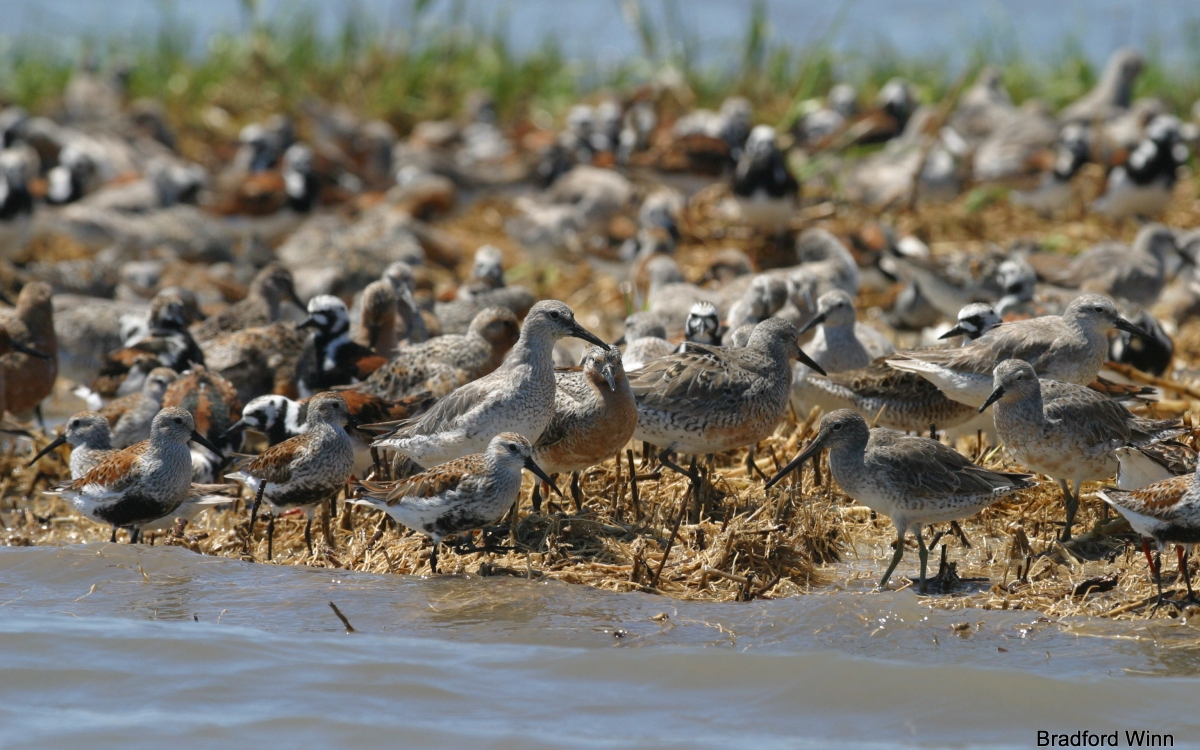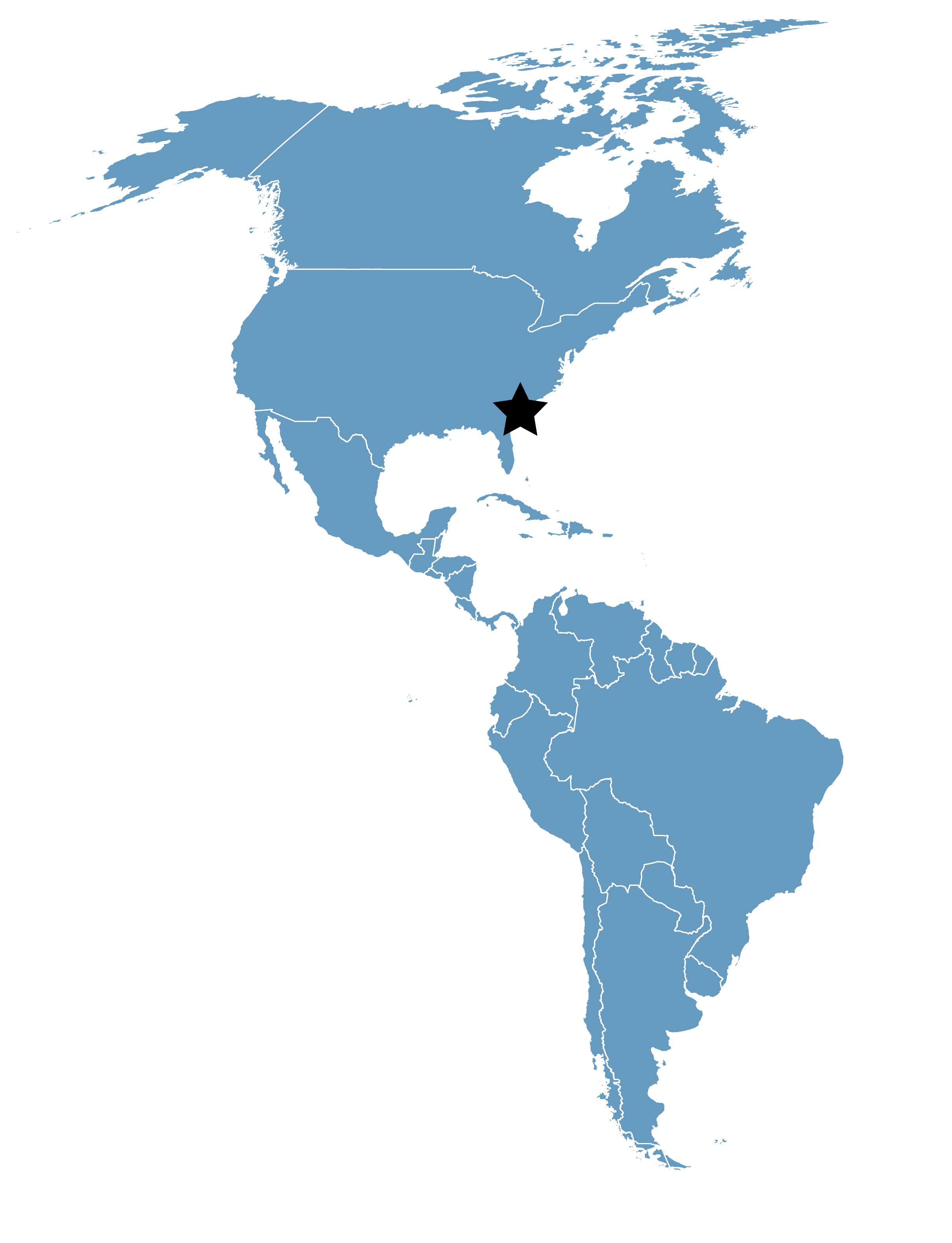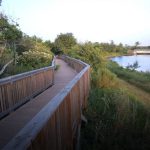Altamaha River Delta
Location
Georgia, United States
Category
Regional
Basis for Designation
Greater than 20,000 shorebirds annually.
Size
8,549 ha (21,125 acres)
Date Designated
Site Owner
Georgia Department of Natural Resources
Little St. Simons Island
U.S. Fish and Wildlife Service
Site Partners
The Nature Conservancy
Georgia Ornithological Society
Coastal Georgia Audubon
Georgia Wildlife Federation
Overview
On October 9, 1999 the Western Hemisphere Shorebird Reserve Network recognized the Altamaha River Delta in Glynn and McIntosh Counties as the 40th major reserve for shorebirds, highlighting its importance as a stopover for migratory and wintering birds traveling between the Arctic and South America. The Georgia Department of Natural Resources estimates this area supports at least 55,000 seabirds and shorebirds annually, stating “There are very few places as valuable to such a large and diverse number of coastal birds in all the southeast United States.”

Shorebird feeding frenzy. Photo by Brad Winn.
Ecology
Prominent features of the delta include sand spit and barrier islands to the north and south with extensive barrier beaches, dunes, maritime forest and salt marshes. The islands and their associated habitats offer exceptional habitat for breeding and wintering birds. The surrounding waters and wetlands provide a readily available food source. The area serves as a resting site for migrating shorebirds, waterbirds and landbirds, including high concentrations of American Oystercatcher (migration/winter: 250), Red Knot (migration 5,000), Dunlin (migration 1,500) and Piping Plover (migration/winter: 65).
Wolf Island National Wildlife Refuge, Little Egg Island Bar and Little St. Simon’s Island are the three main geographical areas within the WHSRN site.
Wolf Island National Wildlife Refuge includes Wolf Island, Egg Island, and Little Egg Island. Over 75% of the refuge’s 5,126 acres are salt marsh. Wolf Island encompasses 4,219 acres of salt marsh with tidal creeks and 300 acres of scrub/shrub upland, including a four-mile long oceanfront beach. The refuge is managed by the U.S. Fish and Wildlife Service as a bird sanctuary and also as a National Wilderness Area. It is only accessible by boat and public access is not allowed. The high-use shorebird area on Wolf Island NWR is Wolf Island’s ocean shore from the northern spit on the island down to the Altamaha Sound.
Little Egg Island Bar is located to the east of the Egg Island and is owned and managed by the State of Georgia as a protected site with restricted access. The bar encompasses just 14 acres of salt marsh and it is completely submerged at high tide.
Little St. Simons Island is a private barrier island. It includes maritime forest, marshes, tidal creeks, dunes and a seven-mile beach. The island is undeveloped except for a small eco-resort, which is operated as a low occupancy natural sanctuary.
Conservation
Many endangered, threatened, and species of concern utilize the area around the delta as wintering grounds or pit-stops along the way during migration, including the Piping Plover, Red Knot, Reddish Egret, Roseate Spoonbill, Peregrine Falcon, Red-cockaded Woodpecker, Bewick’s Wren, Kirtland’s Warbler, and the Bachman’s Sparrow. Other species of concern that nest on or around the delta are the Wood Stork, Bald Eagle, Wilson’s Plover, American Oystercatcher, Gull-billed Tern, and the Least Tern.
The National Audubon Society and The Nature Conservancy have also designated this area as one of the top 500 Important Birding Areas (IBA) in the country and as a Bioreserve in 1991. No person is allowed on Little Egg Island Bar; Little St. Simons Island is open to the public only by reservation and can accommodate a maximum of 30 guests; and, Wolf Island is a National Wildlife Refuge. Also, Little St. Simons Island offers day trips periodically. The lack of human interactions and presence is what makes this area prime habitat for these migratory, wintering, and nesting species.









